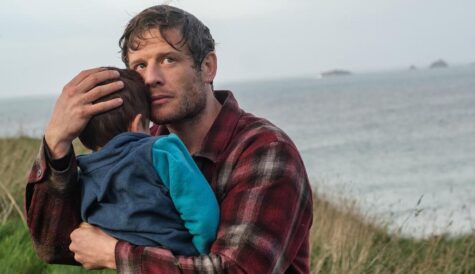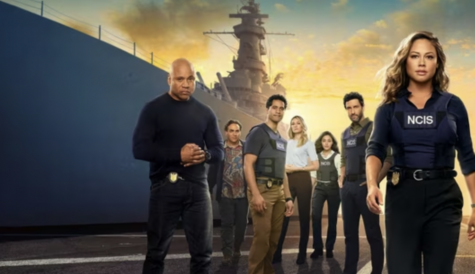Bloody Television
The horror genre has enjoyed a resurgence in recent years, buoyed by the success of feature films such as Scream and Saw.
Scary movies are more popular than ever; the bone-slashing Saw franchise continues to break box office records, while Wes Craven is currently in talks to bring back the ghostface killer from hit teen slasher Scream for a third sequel.
This has had a knock-on effect in the TV world with broadcasters and producers looking to piggyback this success. Recent hits include CBS Paramount International Television’s Dexter, which has sold to over 100 territories worldwide and the Charlie Brooker-penned Dead Set, which brought Channel 4-owned digital channel E4 its highest ever rating when it aired last year.
Daniel Cooper, channel manager at Chellomedia-owned broadcaster Zone Horror, says: “Horror as a genre is doing extremely well, driven by the success of recent films like Friday the 13th and Saw.”
US network NBC looked to tap into this with the launch of a 13x1hour horror anthology Fear Itself during the summer. The series, which was created by Master of Horror‘s Mick Garris and produced by Lionsgate and producer IE Indy TV, is made up of a series of one-offs directed by A-list horror talent including American Werewolf in London‘s John Landis and Freddy vs Jason‘s Ronny Yu.
“Our ability to produce professional franchise movies like Saw and Hostel becomes a beacon for producers to come to us with such projects,” says Craig Cegielski, senior VP, programming and sales, international TV, Lionsgate.
Although Fear Itself didn’t pull up any trees in terms of the network’s ratings – the first episode was watched by 5.2 million viewers – it achieved healthy numbers for an original summer series and it also sold well internationally with broadcasters including AXN, Sci-Fi in Poland and Romania, MBC in the Middle East and Mexico’s TV Azteca acquiring the rights.
Lionsgate is also considering producing TV series based on its hit horror movies. “With the Saw and Hostel franchises, I wouldn’t discount turning them into TV franchises,” Cegielski adds.
Horror, however, still remains an uncomfortable fit for terrestrial broadcasters because of the amount of blood, guts and gore that they are permitted, or want to air and the accordant effect on advertising dollars.
“When it comes to TV, we tap in to the psyche and suspense,” says Cegielski. “Psycho is the greatest horror movie of all time and you don’t see anything horrible on screen.”
Zone Horror has similarly found success with eerie-rather-than-gory series such as The Twilight Zone and Stephen King’s It and the broadcaster has recently inked a volume deal with US studio Warner Bros to acquire 550 hours of programming that includes Salem’s Lot and Freddy’s Nightmares.
Dexter is equally subtle, despite airing on premium cable network Showtime. “The violence is more implied than specific goriness. It’s not like movies like Saw. It’s much more cinematic,” says executive producer Sara Colleton.
One of the biggest deals in the horror world over the last few years was the purchase of legendary film brand Hammer by Cyrte Investments, the Dutch investment vehicle originally established by Endemol cofounder John De Mol. The brand, which produced classic movies including The Curse of Frankenstein and Dracula, has not been making movies since the 1980s but following Cyrte’s acquisition and subsequent $50 million investment, is developing a number of projects. Last year, it launched 20x4mins web vampire series Beyond The Rave in association with Pure Grass Films, which starred Lois Winstone. It is currently developing more than 25 TV and film projects.
“The Hammer library is noted for its remake potential and the company is in discussions with A-list writers and directors to revive and re-imagine some of the highly touted titles,” says Simon Oakes, the former Liberty Global exec who runs the company.
The horror genre has also recently become a goldmine for reality producers with shows such as Scream Queens and Sci Fi’s Estate of Panic becoming hits. Youth-skewing US network The CW has launched 13: Fear is Real, a reality series that pits thirteen contestants against each other in a bid to stay alive as they are put in situations from famous horror movies. The show is produced by Evil Dead producer Sam Raimi’s Ghost House Pictures in association with Magic Molehill Productions, Warner Horizon Television and Jay Bienstock Productions.
Similarly, kids producers are starting to tell scarier stories.
Canadian producer Cookie Jar Entertainment is taking a classic horror property and reversioning it for kids. It is launching a live-action Tales From The Crypt spin-off Tales From Cryptville. “We recognised that there was a gap in the market and we thought it’d be great to bring horror back to the TV screen,” says Cookie Jar’s head of development Ann Austen. She describes the Teletoon series as Buffy The Vampire Slayer-meets-Scooby Doo, aimed a 9-to-14-year-olds. “We’re bringing a twist. Traditionally once you’re scared, shows don’t repeat because there’s no surprise. We figured we had to do something to make it able to repeat so we’re creating a narrative so that as well as being scared you’ll follow the lives of these kids,” she adds.
There are a number of hotly anticipated horror projects to come as well such as CBS’s mid-midseason murder mystery Harper’s Island which will dictate the progress of the genre and determine the amount of frights ahead.



